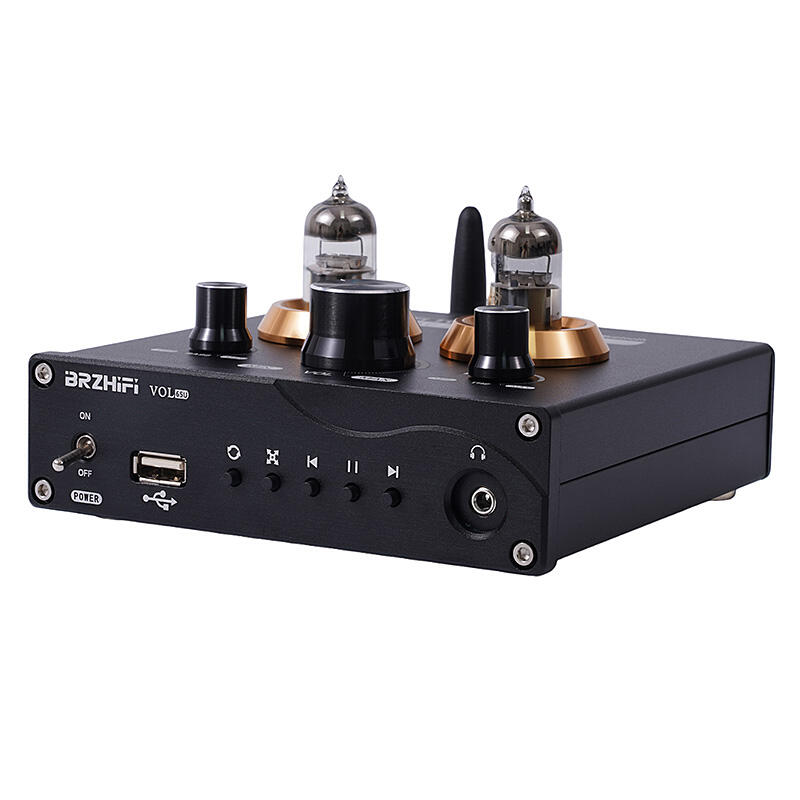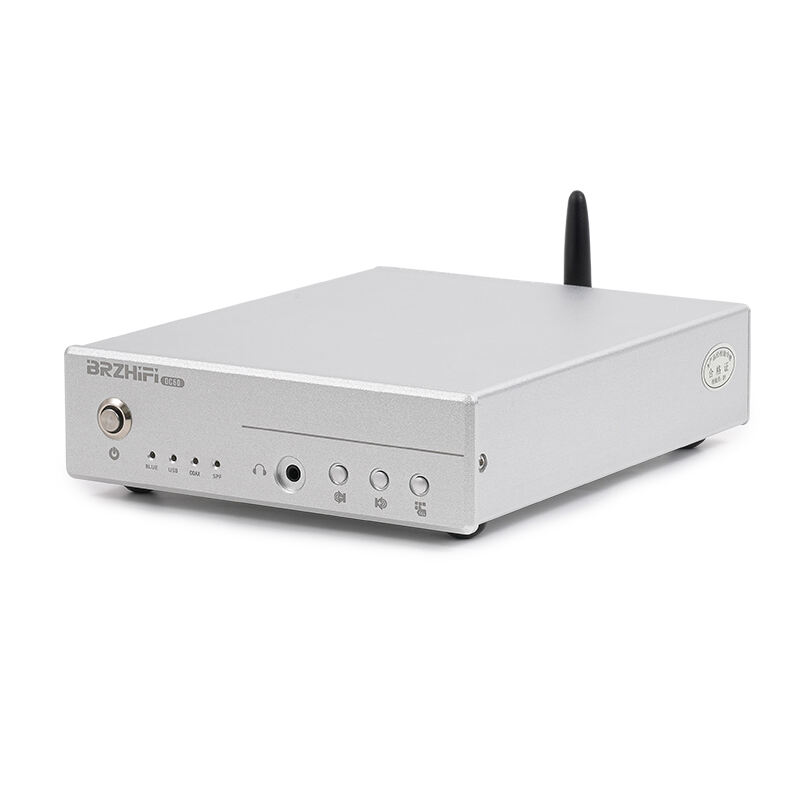Unlocking Superior Audio Quality Through Amplification
The world of high-fidelity audio offers endless possibilities for music enthusiasts seeking the ultimate listening experience. At the heart of this pursuit lies a crucial yet often overlooked component - the headphone amp. This powerful device serves as the bridge between your audio source and headphones, fundamentally transforming how you perceive and enjoy your favorite music.
When you first connect your headphones to a dedicated headphone amp, you'll notice an immediate difference in sound quality. The audio becomes more dynamic, detailed, and engaging, revealing layers of music you might have missed before. This transformation isn't just about making the sound louder; it's about delivering the full potential of your headphones and the music they reproduce.
Understanding Headphone Amplification Technology
Core Components and Functionality
A headphone amp works by taking the weak electrical signal from your audio source and amplifying it to a level that properly drives your headphones. The process involves sophisticated circuitry that maintains signal integrity while providing the necessary power. High-quality amplifiers feature premium components like advanced op-amps, precision resistors, and carefully designed power supplies that work together to deliver clean, accurate sound.
Modern headphone amps often incorporate digital-to-analog converters (DACs) alongside their amplification stages. This integration ensures the cleanest possible signal path from digital sources to your ears. The quality of these components directly impacts the final audio output, with superior designs offering better dynamics, lower distortion, and more accurate frequency response.
Types of Amplification Circuits
Different headphone amps employ various circuit topologies, each with its own sonic characteristics. Solid-state designs utilize transistors and integrated circuits, offering excellent reliability and consistent performance. Tube amplifiers, beloved by audiophiles, incorporate vacuum tubes that can add warmth and harmonic richness to the sound. Hybrid designs combine both technologies, aiming to capture the best of both worlds.
Class A amplification, though less efficient, is often preferred in high-end headphone amps for its superior linearity and low distortion. More efficient Class AB designs balance performance with practicality, while modern Class D amplifiers offer excellent efficiency and compact size without compromising sound quality.

Matching Your Headphones with the Right Amplifier
Impedance and Sensitivity Considerations
Choosing the right headphone amp requires understanding your headphones' electrical characteristics. High-impedance headphones, typically ranging from 250 to 600 ohms, demand more voltage to achieve optimal performance. A properly matched headphone amp ensures these demanding headphones receive adequate power, resulting in improved dynamics and control.
Sensitivity ratings also play a crucial role in amp selection. Less sensitive headphones require more power to reach comfortable listening levels. Professional-grade headphone amps provide ample power reserves, ensuring your headphones perform their best regardless of their power requirements.
Power Output and Headroom
Having sufficient power headroom is essential for maintaining sound quality during dynamic peaks in music. A well-designed headphone amp provides clean power well beyond your typical listening levels, preventing compression and distortion during demanding passages. This overhead contributes to a more relaxed, effortless presentation of music.
Different music genres may benefit from different power capabilities. Classical music, with its wide dynamic range, particularly benefits from ample power reserves. Modern genres with heavy compression might not demand as much power, but still benefit from the improved control and clarity a quality headphone amp provides.
Sound Quality Improvements
Enhanced Dynamic Range
A high-quality headphone amp significantly expands the dynamic range of your music playback. Subtle details in quiet passages become more apparent, while loud sections maintain their impact without compression. This improved dynamic capability brings music closer to the way it was intended to be heard, with greater emotional impact and realism.
The enhanced dynamic range also contributes to better instrument separation and spatial positioning. You'll notice improved clarity in complex musical passages, with each instrument occupying its own distinct space in the soundstage. This separation helps create a more immersive and engaging listening experience.
Tonal Balance and Frequency Response
A well-designed headphone amp maintains consistent performance across the entire frequency spectrum. Bass becomes tighter and more controlled, midrange gains clarity and presence, and high frequencies exhibit improved detail without harshness. This balanced presentation allows you to hear the true character of your headphones and music.
The improved frequency response also helps reveal subtle nuances in recordings, from the decay of cymbal strikes to the resonance of acoustic spaces. These details contribute to a more realistic and involving listening experience, helping you discover new aspects of familiar recordings.
Practical Setup and Usage Tips
Optimal Signal Chain Configuration
Setting up your headphone amp for optimal performance involves careful consideration of your entire audio chain. Using high-quality interconnects and maintaining clean power supply helps maximize performance. Position your amp away from potential sources of interference, and ensure proper ventilation for components that generate heat.
Digital sources benefit from careful setup of sampling rates and bit depth settings. Many modern headphone amps include USB inputs with native support for high-resolution audio formats, allowing direct connection to computers and digital audio players.
Maintenance and Care
Regular maintenance ensures your headphone amp continues performing at its best. Keep connections clean and secure, and periodically check for any signs of wear or degradation. If your amp uses vacuum tubes, monitor their condition and replace them when necessary to maintain optimal performance.
Temperature management is important, particularly for tube-based designs. Allow adequate warm-up time before critical listening, and ensure proper cooling during extended use. These simple practices help protect your investment and maintain consistent performance.
Frequently Asked Questions
When do I need a headphone amp?
You'll benefit from a headphone amp when using high-impedance headphones, professional monitoring headphones, or when seeking improved sound quality from any quality headphones. If your current setup sounds thin, lacks detail, or can't achieve adequate volume without distortion, a headphone amp could be the solution.
Will a headphone amp work with wireless headphones?
Traditional headphone amps work with wired headphones only. Wireless headphones incorporate their own internal amplification and digital signal processing. However, you can use a headphone amp with the transmitter unit of some wireless systems to potentially improve the signal quality being sent to the wireless headphones.
How do I choose the right headphone amp for my setup?
Consider your headphones' impedance and sensitivity specifications, your source components, and your budget. Look for an amp that provides adequate power for your specific headphones, offers the input connections you need, and includes any additional features like DAC functionality that might benefit your setup. Reading professional reviews and seeking recommendations from audio enthusiasts can help guide your decision.

